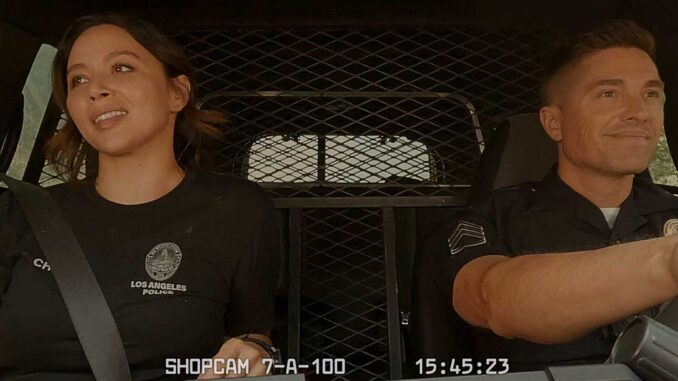
The Unseen Wheel: How The Rookie Turns Limited Budgets Into Cinematic Episodes With Pod Cars
In the highly competitive landscape of network television, where multi-million-dollar superhero epics and prestige dramas often steal the spotlight, ABC's The Rookie consistently defies its inherent budget limitations. This police procedural, set against the sun-drenched, yet often perilous, backdrop of Los Angeles, frequently achieves a cinematic scope that belies its non-premium cable origins. It's a testament to ingenious filmmaking, smart storytelling, and, perhaps most notably, a humble but revolutionary piece of equipment: the "pod car." This unassuming vehicle is The Rookie's secret weapon, allowing the show to transform budget constraints into opportunities for dynamic performance and visually arresting sequences, proving that a little ingenuity can go a long way in crafting genuinely cinematic television.
Network television operates under a specific set of constraints. Budgets are tighter, shooting schedules are more aggressive, and the need for a high volume of content means every minute and every dollar must be meticulously optimized. For a show like The Rookie, which thrives on action, car chases, and the constant movement inherent to patrolling a vast metropolis like L.A., these limitations present a unique challenge. How do you convey the urgency of a high-speed pursuit or the intimacy of a tense conversation in a patrol car without shutting down entire city blocks for hours or resorting to static, uninspired camera work? The answer lies in a clever piece of engineering that prioritizes performance and camera freedom over brute-force logistics.
Enter the pod car. At first glance, it appears to be a standard police cruiser, ambulance, or even a civilian vehicle. However, on closer inspection, one notices a secondary, elevated cockpit mounted on the roof or sometimes disguised as part of the trunk. This is where a professional stunt driver sits, out of frame, fully controlling the vehicle. Below, in the actual driver's seat and passenger seats, are the actors. They are free to focus entirely on their performances, delivering lines, reacting to unseen threats, and engaging in the nuanced character interactions that define the show, all while the vehicle is in motion.
The cinematic impact of this arrangement is profound. Firstly, it liberates the actors. Instead of grappling with the demanding task of driving, hitting marks, and delivering complex dialogue simultaneously – a feat that often leads to stilted performances and numerous retakes – they can immerse themselves fully in their roles. Imagine Nolan and Bradford in a tense exchange, their eyes locked, their facial expressions conveying layers of emotion, all while the car appears to be careening through traffic. With a pod car, the camera can capture every flicker of emotion, every subtle gesture, turning a standard driving scene into a powerful dramatic beat. This focus on performance elevates the entire scene, making it feel more authentic and immediate.
Secondly, the pod car grants unprecedented freedom to the cinematography. With no actual driver to obscure, cameras can be placed virtually anywhere within the vehicle's cabin. This opens up a world of dynamic angles: low-angle shots emphasizing speed, tight close-ups on the actors' faces, sweeping 360-degree shots that capture the entire interior, or even handheld cameras that weave around the confined space. This versatility allows the directors to craft sequences that are far more visually engaging than static tripod shots of actors merely pretending to drive. The camera can become another character, moving with the action, drawing the viewer deeper into the experience, mimicking the immersive feel often associated with big-screen productions.
Beyond the mechanics and aesthetics, the pod car is a masterclass in budgetary efficiency. Filming car scenes conventionally is incredibly expensive. It often requires closing down streets, managing traffic, hiring numerous stunt drivers and crew, and dealing with the inherent safety risks. The pod car minimizes many of these logistical nightmares. While some street closures might still be necessary for wider shots, the bulk of the interior dialogue and reaction shots can be filmed more quickly and safely, sometimes even on a green screen soundstage with pre-shot background plates, which are then composited in post-production. This drastically reduces the time, personnel, and permits required, allowing The Rookie to squeeze more cinematic bang for its buck. The illusion of a high-stakes car chase or a rapid response through busy L.A. streets can be created with remarkable effectiveness, without the crippling costs of a Hollywood blockbuster.
Ultimately, The Rookie's embrace of the pod car exemplifies a philosophy that underpins much of successful television: limitations breed creativity. Instead of lamenting what they can't afford, the show's creators have leveraged innovative tools and techniques to achieve a level of cinematic polish that consistently punches above its weight. The pod car is more than just a piece of equipment; it's a symbol of how smart production choices can transform mundane necessities into artistic opportunities, enabling The Rookie to deliver episodes that are not just entertaining but genuinely immersive, proving that a compelling story, delivered with ingenuity, can always find its way to the big screen – even if it's on your living room television.
